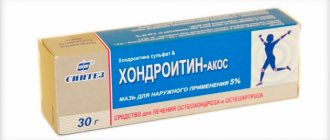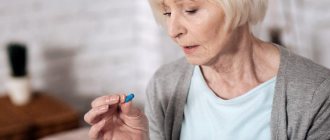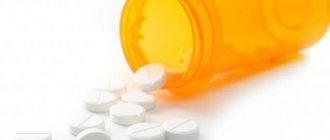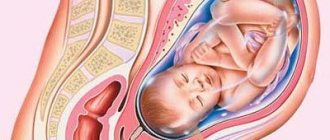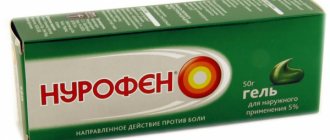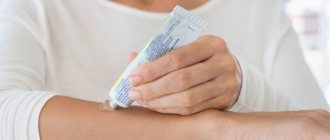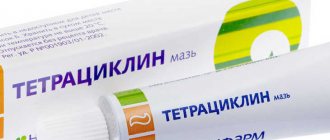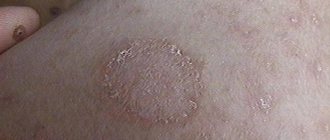Traditional methods of getting rid of edema
In the absence of serious pathologies, traditional medicine, which is available to everyone, is indicated to relieve swelling. Healers call this problem “dropsy,” which is a consequence of some disease.
For treatment with such methods, the following recommendations must be followed:
- Reduce fluid and salt intake to a minimum.
- Choose products with a rich vitamin and protein composition.
When swelling occurs, it is advisable to give preference to fruits, vegetables, herbs and berries - celery, parsley, asparagus, onions, garlic, watermelon, strawberries, pumpkin and black currants. It is also useful to eat cottage cheese, drink yogurt and kefir.
There are a large number of folk remedies for edema in different versions - teas, infusions and decoctions.
Herbs
The accumulated fluid is effectively removed by diuretic herbs for edema. For example, chamomile, which in addition also normalizes the functioning of the digestive system. The plant is particularly useful for edema associated with central nervous system disorders, as it has a sedative property.
Due to its pronounced aroma and the presence of a large number of useful substances, as well as its diuretic properties, parsley is also used to get rid of edema. To do this, prepare an infusion of 1 small spoon of spice seeds, poured with boiled chilled water and infused for 7 to 9 hours. You need to drink the composition every 2 hours, 3 tablespoons per day.
Dill seeds also have the same effect - pour boiling water over 1 large spoon and let stand for 1 hour, taking the prepared drink before meals several times a day.
Celery, its fresh leaves, juice and essential oil have also proven themselves to be excellent. Potassium and magnesium in the plant help remove excess fluid from the body. It is consumed in the form of salads and other dishes, and the juice is drunk before meals 30 minutes, 1 teaspoon three times a day.
Fruit drinks and juices
Fruit drinks with juices are also good, for example, from cranberries with horseradish roots, black radish with honey, as well as pumpkin, which helps with swelling caused by heart disease, kidneys and bladder.
Remedy during pregnancy
Very often during pregnancy, swelling can only be eliminated using traditional methods.
And there are many recipes for this, here are the most common:
- You should drink half a glass of carrot juice with pulp before lunch;
- pumpkin juice is also consumed;
- birch drink is drunk in the same amount, but 2 times a day;
- fresh cranberry juice mixed with honey or sugar, drink a small spoon 2 times a day;
- An excellent anti-edema remedy is black tea, to which pieces of quince are added.
But it is worth remembering that even in the absence of a direct negative effect on the fetus, traditional medicine methods during pregnancy should not be used without a doctor’s examination, since any product has its own contraindications.
Diet for pregnant women with edema
The best diet for pregnant women with edema is salt-free. Edema provokes an increase in blood pressure, so most doctors, having noticed their presence in a pregnant woman, will advise staying on this diet for a couple of weeks.
Typically, a salt-free protein diet for edema during pregnancy comes down to eliminating any salt in the cooking process. It is enough to replace it with powdered garlic or lemon juice if you are not allergic to these products. You should not eat soy sauce, ketchup, mayonnaise and other store-bought sauces. All seasonings with additional salt and monosodium glutamate are prohibited. If you have a habit of adding salt to your dishes and eating everything listed above, you should not prescribe this food yourself.
It is worth paying attention to the diet according to Dr. Eigoltz. A protein diet during pregnancy is nothing more than an adaptation of the rules of healthy eating recommended by WHO to the needs of the body of a woman carrying a child.
The menu is based on baked potatoes, whole grain cereals, and bread. These foods can be eaten 3-5 times a day, that is, with every meal. Serving – 30 g of bread or 100 g of any porridge or boiled potatoes.
The second necessary component is vegetables, herbs and fruits. You should eat 1 serving of these foods with each meal. A serving is 200 g of stewed vegetables or salad with oil, but not mayonnaise dressing, or 1 medium-sized fruit, or 200 g of berries.
In addition, 1 serving of lean meat per day is required - 120 grams, and 1 serving of eggs (2 pieces) or dairy products (200 g of cottage cheese, 100 g of yogurt, 250 ml of milk or kefir). You should exclude sweets, coffee, processed foods and all foods like chips.
The diet for edema during pregnancy should be based on proper nutrition. An increase in swelling of pregnant tissue almost always occurs. The longer the period, the more complicated the situation becomes. An additional amount of fluid in late pregnancy is physiologically justified. But despite this, it is worth resorting to proper nutrition.
Metabolism occurs only in a liquid environment, and since it is more intense, more fluid is needed in the tissues.
Secondly, a large belly makes a woman more clumsy, and the swollen tissues provide greater protection from shocks and minor injuries. Thirdly, the excess fluid stored at the end of pregnancy is consumed during childbirth, since the woman does not drink for almost a day due to contractions and the period of pushing. During this period, its water reserves are consumed, and dehydration does not occur. The remaining portions of additional fluid replenish the volume of blood lost during childbirth, and thus replenish the volume of fluid circulating in the vessels.
It is advisable to drink pure or mineral water without gas. After all, soda provokes thirst and causes heartburn. You should give preference to green or weak black tea. But this issue should be discussed with your doctor. Because not all pregnant women can use herbs. A diet for edema will help you avoid unpleasant symptoms while bearing a child.
[], [], [], [], [], []
Prevention
Provided there are no chronic diseases, it is quite simple to prevent swelling in the legs without the use of drugs. To do this, experts recommend the following:
- wearing low-heeled shoes;
- use of compression hosiery if you are prone to varicose veins;
- regular medical examinations;
- proper nutrition;
- giving up alcohol and smoking;
- sports 2-4 times a week and daily home exercises;
- performing a foot massage when they are tired.
If swelling occurs periodically, you should consult a doctor. Early diagnosis of the disease significantly increases the likelihood of a full and rapid recovery.
Swelling of the legs is a symptom of an underlying disease. Before treatment, it is necessary to undergo a full examination. Treatment agents are selected individually. Only some local medications are allowed to be used independently.
Dietary rules for edema - what can and is healthy to eat to reduce swelling?
To reduce swelling, you need to eat healthy and balanced. The diet should be rich in animal proteins and foods rich in potassium.
Nutritionists list the following as foods that reduce swelling:
- Watermelon, cucumbers, melon - these products have a pronounced cleansing and diuretic effect.
- Celery, sorrel - thanks to the diuretic effect, they not only relieve swelling, but also lower blood pressure.
- Beans are especially effective for edema caused by heart or kidney diseases.
- Baked potatoes are rich in potassium, which helps remove excess water from the body.
- Green apples are useful for swelling, both raw and baked.
- Oats not only help get rid of swelling, but also cleanse the body of harmful substances.
- Low-fat milk, kefir.
- Honey – in the absence of an allergy to this product, honey reduces swelling in the legs.
- Beet.
- Cottage cheese.
- Green onions.
- Pumpkin.
- Carrot.
Traditional herbal recipes
All folk remedies in the form of herbal preparations do not replace medicinal diuretics, but are used as an addition to them.
- In equal parts, take birch buds, bearberry and lingonberry leaves, and dried juniper berries. The mixture is brewed as usual - a spoonful in a glass of boiling water. Take half a glass before meals. The collection is good for poor kidney function.
- Pour a spoonful of flaxseed into a liter of boiling water and leave, covered, in a thermos, for an hour. Drink half a glass every two hours during the day.
- Brew a spoonful of dried parsley leaves in two glasses of boiling water, leave for half an hour and strain. Drink the infusion three times a day.
- Pour a glass of boiling water over a spoonful of dill seeds and leave in a water bath for 15 minutes. Strain and drink half a glass before meals.
- Mix sage leaves, plantain and anise seeds in equal parts. Brew a spoon into a glass of boiling water, drink half a glass three times a day.
- Mix strawberry leaves with birch leaves, flaxseed and nettle, also in equal parts. Brew according to the classic method, take half a glass before meals.
- Pour 2 tablespoons of birch leaves into a thermos with half a liter of boiling water and leave for three hours. Drink three times a day, before meals.
- For swelling in pregnant women, pour boiling water over a handful of dried apricots, leave for 8 hours and drink as tea.
Decoctions for swelling of the legs: how to get rid of swelling
For swelling of the legs, prepare and drink the following decoctions:
:
- Calendula flowers, valerian root, motherwort and Adonis vernacular herbs (1 tsp each), St. John's wort and corn silk (1 tsp each) are mixed, poured with a liter of boiling water and left for about an hour. Drink ½ glass 4-5 times a day, adding honey.
- 800 g of parsley (root and greens) are finely chopped, put in a saucepan, poured with a liter of fresh milk (not pasteurized), and brought to a boil over low heat. The milk should boil until half of it has evaporated. Strain the broth and take a dessert spoon every 2 hours. It helps even when diuretic pills prescribed by a doctor do not work.
How to remove
Medicines
The best and most universal remedies: drink enough water, do not abuse drinks with a diuretic effect (fruit drinks, juices, coffee, tea, alcohol), salt and sugar, do not worry, play sports and visit a doctor, since different diseases should be treated individually!
For cardiac, renal, venous and hepatic edema, taking diuretics will have an effective effect.
For allergic and inflammatory edema, take antiallergic (antihistamine) drugs.
For arthritis and arthrosis, take anti-inflammatory drugs.
You can use a natural diuretic (within extremely reasonable limits):
- Pour 2 teaspoons of lingonberry leaf into a glass of water, boil for 30 minutes and strain. Drink in small sips throughout the day. Effective for swelling of the legs.
- You can remove excess fluid from the body with the help of many vegetables, fruits, and berries; for example, for edema, it is recommended to eat strawberries until completely saturated at every opportunity.
- An infusion of black currant leaves helps rid the body of excess uric acid and purine substances, so it is drunk for swelling and urinary retention.
But do not forget that edema itself is not a disease, but only a consequence and the underlying disease must be treated! Only a doctor can prescribe competent treatment.
Diet for prevention and treatment
The basic principles of nutrition for edema are not as complicated as many people think: you do not need to turn your diet into a collection of diuretic drinks and foods. The most important thing for you:
- use from 1 to 2.5 g. protein and from 2 to 4 g. carbohydrates per 1 kg. available mass,
- eat at least 5 servings of vegetables, fruits and berries per day: 400-500 grams in total,
- do not get carried away with diuretics, teas or tablets,
- limit the amount of very sweet or salty foods,
- take potassium supplements (there is already a lot of sodium in food),
- do not choke on water: excessive fluid intake also easily disrupts the water balance and causes swelling.
How to remove by exercise
This exercise, in fact, is part of the famous Japanese health system of Nishi, which includes, in addition to dietary and cleansing measures, vibration gymnastics. It can bring enormous benefits to the body, and not only relieve swelling of the legs, but also improve health in general.
We recommend that everyone do it, even those who do not suffer from swelling.
- Lie on the floor, raise your arms and legs up.
- Now shake your legs and arms vigorously at the same time, as if you were shaking off water. Movements should be frequent and vibrating. Duration of at least 1 minute. Better yet, longer.
- It is good to do this exercise before bed. And also several times during the day.
This simple manipulation works real miracles. Start doing the exercise regularly, and you will see for yourself its beneficial effect on the body, health and appearance.
As for the rest of the sport, there is one piece of advice: movement is health and beauty! But move the way you like and feel comfortable. Of course, the ideal is to do strength training 2-3 times a week, swim in the pool once and lead an active life.
But if there is no time, energy, or money for this, then move as much as possible, at least 30 minutes 5 times a week!
Negative effects and contraindications
Treatment with drugs locally, in the form of ointments, can significantly reduce the risk of negative side effects. Nonsteroidal anti-inflammatory drugs in the form of gels, creams or ointments practically do not penetrate into the systemic circulation. Therefore, the side effects are extremely weak.
At the same time, anti-inflammatory ointments are not recommended:
- apply to damaged skin areas;
- for dermatological diseases;
- allergic reactions;
- bronchial asthma.
The drugs are used with caution in childhood, during pregnancy and lactation. Sometimes anti-inflammatory components have a negative effect on the gastrointestinal tract and internal organs.
You can optimally select the necessary anti-inflammatory ointment if you know the cause of pain and dysfunction of muscles or joints. In situations where local analgesics do not provide the expected effect, additional research should be carried out and treatment adjusted.
We recommend reading similar articles:
Causes of leg swelling
Edema of the legs is a condition in which fluid is retained in the intercellular space. Visually, the legs become fuller, the skin stretches, becomes thinner, and when pressed, a dent remains at the site of the swelling. Skin color changes. 30% of all water present in the body is intercellular fluid; if the percentage increases, swelling begins.
Causes of physiological edema:
- Pregnancy. The hormonal state of a woman changes, and due to weight gain, physical stress on the legs increases.
- Premenstrual condition is a possible cause of swelling of the feet and legs. It also occurs due to hormonal changes.
- In men, legs swell most often due to excessive physical exertion and uncontrolled sports.
- Physiological edema, characteristic of both sexes, occurs when a large amount of liquid is consumed, which the body does not have time to remove from the body.
- The habit of sitting cross-legged for a long time or using low, soft chairs for this can contribute to compression of the veins, and disruption of the movement of blood through the veins also leads to swelling.
- Rapid weight gain or too much body weight contributes to disruption of proper metabolism and increases the load on the lower limbs.
- In women, swelling of the feet can occur due to prolonged walking in uncomfortable high-heeled shoes. The leg is in an unnatural, compressed position, the outflow of fluid is disrupted.
Before you can get rid of leg swelling, you need to find out the cause.
If there are no prerequisites for physiological swelling of the legs, then the swelling is a symptom of one of the diseases:
| Pathology | Characteristic |
| Phlebeurysm |
|
| Kidney disease |
|
| Rheumatism |
|
| Thyroid disease |
|
| Allergy |
|
| Fractures, bruises, dislocations |
|
| Severe liver diseases |
|
| Gout |
The doctor will tell you how to get rid of swelling of the legs associated with pathological causes, prescribing a specific treatment for the disease.
What diseases cause swelling?
The causes of edema can be very different, but they often indicate health problems. Edema appears on the body due to a large accumulation of lymph in tissue crevices.
Edema can occur for the following reasons:
- Allergy - swelling caused by an allergic reaction can lead to serious consequences, including angioedema. At the first symptoms of allergic edema, you should consult a doctor.
- Uncomfortable shoes - due to such little things as high stiletto heels or the wrong shoe size, your feet can swell quite a lot.
- Another common cause of leg swelling is varicose veins and metabolic disorders caused by lymph stagnation. These diseases appear especially often in overweight people.
- Hormonal imbalances and thyroid disease can lead to swelling of the legs and tongue.
- Heart failure is one of the most common causes of edema.
- Kidney disease - With kidney failure, the back of the leg usually swells. The swelling itself can be painful and uncomfortable.
- Excess salt in the body - excessive consumption of salty foods leads to water retention in the body, which causes excess fluid to appear in the tissues.
- Premenstrual syndrome and pregnancy - women are familiar with this problem.
- Passive lifestyle.
- Drinking large amounts of water in the evening - many of us wake up in the morning with a swollen face, and this is precisely the result of drinking plenty of water before bed.
Traditional methods
It often happens that a bruise occurs at a time when there are no special medications in the home medicine cabinet, and the pharmacy is already closed. A person can generally be outside the city, on vacation, in the country, where there are no pharmacies. In this case, traditional medicine methods will help to cope with swelling and other symptoms of a bruise.
From time immemorial, our ancestors used the following recipes:
- After use, the tea leaves are cooled, wrapped in a piece of gauze and applied to the site of swelling.
- The onion is grated, the pulp is wrapped in gauze and applied to the bruise. Onion reduces swelling and pain.
- Make a cottage cheese cake, place it on a piece of cloth and place it in the freezer for about five minutes. Cottage cheese remains cold for a long time and helps not only reduce swelling, but also eliminate hematoma.
- They grind various plants and apply them to the bruise. Among the most effective are St. John's wort, plantain leaves, and wild garlic. The juice of these herbs has a beneficial effect on soft tissues, has an antiseptic effect, and improves blood circulation and fluid outflow at the site of injury.
Medicinal plants can be used either in raw chopped form or brewed for compresses, made into tinctures, powders, and ointments. Another effective way is to use a lotion of a pinch of salt, a couple of drops of iodine, a tablespoon of vinegar and a tablespoon of water. A bandage soaked in this liquid is applied to the bruise, and the top is covered with a plastic bag and bandaged with a bandage.
Among topical medications for removal, you can use Troxevasin, Mirralgin, Heparin ointment, Bodyaga, Rescuer, or Traumeel. Before using any medicine for a bruise in a child, you should consult a doctor. If very large swelling, impaired motor functionality and hyperemia appear, it is worth undergoing an examination for the presence of fractures or ligament ruptures.
Features of the use of ointments for injuries
Treatment of injuries with anti-inflammatory ointments has its own characteristics. The main purpose of using drugs is to reduce swelling, reduce temperature, and relieve pain. The use of warming ointments in such situations is unacceptable.
For sprains, dislocations, and fractures, they try to use combined ointments. They usually contain a non-steroidal anti-inflammatory component and a cooling agent (menthol, levomenthol, essential oils, methyl salicylate).
Dicloran plus, Deep relief, Menovazan cope with pain and swelling in various injuries. Anti-inflammatory components reduce pain, and products with a cooling effect distract from the damaged area.
Preventive recommendations
- Preventive measures include wearing comfortable shoes. If you have flat soles, you need to buy orthopedic insoles at the pharmacy;
- People prone to swelling must wear compression stockings before a long walk;
- Heavy bags need to be redistributed evenly to avoid heavy load on the muscles and blood vessels of the legs;
- If swelling does appear in the evening, you can raise your shins up, lean on the wall and lie in this position for 5-6 minutes. First rub the swelling area with your hands;
- Eating more vegetables and fruits, high in vitamins, helps strengthen the walls of the veins.
Factors contributing to the appearance of edema
It is quite difficult to diagnose this pathology on your own. There are many reasons for the appearance of edema. If such a problem occurs, you should undergo a medical examination. Timely identification of the cause will help to effectively eliminate it and get rid of swelling. Home treatment can be used in many cases, but you need to know what factors provoke the appearance of swelling.
The main causes of swelling in the legs are:
- varicose veins;
- cardiac dysfunction;
- joint diseases;
- kidney failure;
- liver diseases;
- taking certain medications.
Swelling with varicose veins is highly dense. The temperature in its area is increased; if you press on the swelling, pain is felt. In addition to swelling, there is a feeling of heaviness in the legs and heat in the feet. A vascular network is noticeable on the skin, then they darken, later nodes form, and trophic ulcers appear.
Accumulation of fluid in the lower extremities is observed in cases of cardiac dysfunction. For the most part, swelling appears in the evening, the swelling tissues are cool, and pressing causes pain.
The swelling that accompanies joint diseases does not cause pain; the swelling gradually increases in volume. Swelling appears at the end of the day and resolves overnight.
If kidney function is impaired, swelling is observed after sleep and forms in the upper zone of the feet. The swellings are soft and form on both legs. They usually appear after drinking a lot of liquid. In addition to swelling in the legs, pain is felt in the lumbar region, bags form under the eyes, urine changes smell and color.
Swelling is one of the symptoms of liver cirrhosis. With this disease, disruptions in metabolic processes are observed. In the systemic circulation, blood stagnation occurs, fluid accumulations are observed throughout the body, and ascites is formed.
Swelling is one of the consequences of injuries; it occurs at the site of a bruise or fracture. Women often encounter this disorder during pregnancy. At this time, the volume of fluid in the body increases significantly; natural circulation does not always cope with its timely removal. The cause of swelling in expectant mothers may be compression of blood vessels by the growing fetus, malfunction of the kidneys, etc.
Remedies for heart and kidney disorders
Initially, the doctor prescribes medications to eliminate the primary pathology or maintain the normal functioning of these organs. Taking diuretics is considered secondary; it is necessary to eliminate the symptom of swelling of the legs.
If fluid accumulates due to a malfunction of the cardiovascular system, the following drugs are prescribed:
- Piretanide, Bumetanide - diuretics used for heart failure;
- Moduretic, Urandil - cardiac thiazides;
- loop diuretics – Trigrim, Isobar.
The action of these drugs is aimed at relaxing the vascular walls, normalizing blood circulation and removing excess fluid.
For kidney diseases, loop diuretics and potassium-sparing drugs are used. Popular among them are Oxodolin, Mannitol, and Triamterene. Elimination of edema due to renal pathologies should be carried out with extreme caution.
Expert opinion
- Cosmetologist
- Surgeon
Anna Avaliani
practicing cosmetologist
If you wake up with swelling, try applying a cold compress. Of course, you can try other emergency home methods. But sometimes they are powerless. In this case, go to a cosmetologist, especially if swelling is constantly present.
Aisha Baron
plastic surgeon
If you often experience swelling, and there is no particular reason for it, then you should worry about your health. To do this, undergo the appropriate diagnostics. If no problems are identified, then feel free to start dealing with the problem. To do this, you need to start taking a comprehensive approach to the issue. Just applying ice will not be enough. Make masks, use suitable cosmetics, go to a cosmetologist. Women often confuse puffiness with age-related changes that they encounter after 45-50 years. Often, blepharoplasty or check-lifting can help improve the appearance in such a situation. If the cause is alcohol, you should avoid eating salty foods, fried foods, preserved foods, and spicy foods.
If there is swelling after surgery, you do not need to prescribe diuretics yourself; it is better to avoid hot water procedures, decorative cosmetics, aggressive cosmetic procedures (scrubs, peelings), and physical activity.
By following simple recommendations, you can improve the situation and get rid of swelling.
Restoration and healing products
Often, after limb injuries, patients neglect a whole group of drugs - chondroprotectors. Chondroprotectors for fractures of the leg bones and spine are useful for restoring joints during the rehabilitation period.
Such drugs are most often prescribed in cases where age-related changes in the joints develop. After healing of a leg fracture in the ankle area, it is especially necessary to accelerate the regeneration of cartilage tissue. Ointments with chondroprotectors are used for a long time.
Active ingredients: chondroitin sulfate, glucosamine. The first component prevents the destruction of joints and stops degenerative processes that have already begun. If the ointment contains dimethyl sulfoxide, then the product also has an anti-inflammatory effect. Cheap Russian-made ointment with chondroprotective and moderate analgesic effects Chondroitin-Acos.
When are serious diuretics needed?
If a person had fun all night at a party with friends or simply drank a lot of liquid before bed, the next morning he may be upset by noticeable swelling under the eyes
Naturally, everyone wants to quickly remove ugly bags, especially if they have to go to work or an important event. But you shouldn’t do this with strong diuretics.
All tablets from this group have a number of contraindications and side effects; they may eliminate one-time swelling, but at the same time they can disrupt some functions of internal organs.
Pharmacy medications with active ingredients are needed in the following cases:
- The swelling does not decrease throughout the day; on the contrary, in the evening swelling appears on the arms and legs too.
- The swelling becomes larger over time and spreads to the cheekbones.
- The bags take on a dark color.
- Due to edema, a noticeable narrowing of the palpebral fissure develops (in severe cases, edema provokes displacement of the eyeball).
With such symptoms, effective medications are needed to eliminate edema, but first you need to diagnose and accurately determine the cause. And only a professional doctor can do this. As a rule, constant swelling under the eyes is not an independent pathology, but only a consequence of a malfunction of any internal organs and systems. It is imperative to establish which ones and carry out appropriate treatment. Otherwise, even the best and most expensive diuretic will not help. The problem will be solved, but not for long, and over time the swelling will bother you again.
Furosemide is one of the most popular diuretic drugs traditionally prescribed for severe edema.
"Troxevasin": composition and instructions for use
To eliminate swelling, doctors recommend using special medications that help normalize blood circulation in swollen areas of the body.
“Troxevasin” is an ointment for edema, which is one of the most popular and is used as a local remedy. This gel fights swelling, bags under the eyes and hematomas, while it has almost no side effects.
The popularity of the ointment is due to the fact that its price is much lower compared to similar products, but its effectiveness is the same or even greater.
The active component of the gel is troxerutin, which relaxes the smooth muscles of the vascular bed. At the same time, it increases vascular tone and makes capillaries less fragile. The ointment takes effect within a couple of hours after application. After one hour, the active substance penetrates into the deep layers of the skin, and after two hours it has an effect on the subcutaneous fatty tissue. However, the swelling goes away earlier, so Troxevasin helps against bags under the eyes within 30 minutes after use.
The ointment is available in the form of tubes containing a transparent substance with a yellowish tint. The share of the active component is no more than 2%, and the rest is auxiliary ingredients.
There are three types of medication: gel, ointment and cream, but the first is the most common and is used in everyday life.
Useful properties of the drug
The main beneficial properties of “Troxevasin” for the skin are the following actions of the ointment:
- eliminates existing inflammation;
- removes swelling;
- improves blood circulation;
- promotes tissue regeneration.
Within half an hour after applying the product to your face in the area under your eyes, you will look better. In this case, the speed of the effect will not depend on the reasons that caused the swelling.
Contraindications for use
Like other medications containing active chemical components, Troxevasin has contraindications. The drug should not be used if you have the following diseases:
- gastritis;
- stomach ulcer;
- inflammation of the duodenum;
- chronic kidney disease;
- allergy to substances in the gel.
The question arises: how can a local agent have a negative effect on the stomach or kidneys? The reason is that troxerutin is absorbed deep into the skin and its effect spreads to neighboring tissues, which means it enters the blood. The content of this component is small, but this amount is quite enough to affect the functioning of some organs.
"Troxevasin" for puffiness under the eyes is one of the safest and most affordable medications for consumers. Most of the reviews from those who have used this drug are positive. The gel eliminates bags and swelling on the face. However, before using the drug, it is recommended to consult a dermatologist.
How to use Troxevasin ointment for edema, see the video:
How to quickly relieve swelling from your legs at home
The use of folk remedies for swelling of the legs is justified if the pathological process is not associated with diseases of the internal organs and occurs periodically. Otherwise, the treatment of edema should be determined by a doctor, based on the results of the study.
For swelling of the lower extremities, it is customary to take herbal teas brewed from medicinal plants with a strong diuretic property.
Compresses will help quickly remove swelling and restore motor activity.
Diuretics
Do-it-yourself folk remedies take first place in the ranking of methods for quickly relieving leg swelling at home.
There are quite a large number of medicinal plants known to have a diuretic effect, which are used in the preparation of decoctions, tinctures, and medicinal cocktails.
Here are a few recipes for preparing diuretics that are effective in treating leg swelling:
Foot baths
When you don’t know what you can do at home, when your feet are swollen, foot baths will come to the rescue. They will quickly relieve swelling of the legs, a feeling of fatigue, and restore natural blood circulation.
By relieving swelling of the legs with the help of folk remedies, you can not only get rid of unpleasant symptoms, but also quickly restore motor activity.
Compresses
Swelling of the legs may be accompanied by unpleasant sensations of itching, pain, and redness of the skin. Having studied in detail the methods of how to remove swelling in the legs at home, you can easily eliminate all the unpleasant symptoms yourself.
1. Cabbage leaves are an excellent remedy for swelling of the legs. The cabbage is crushed with a rolling pin, thick veins are removed and applied to the site of swelling. The compress is kept for at least twelve hours (it is better to leave it overnight). A cabbage leaf compress is the simplest and safest time-tested remedy for swelling.
2. Birch leaves. For the compress you will need 200 g. fresh leaves. They are brewed with boiling water and left for forty minutes. To enhance the medicinal properties, the leaves can be combined with a tablespoon of salt. Gauze is dipped into the resulting mixture, which, folded in several layers, is applied to the swollen area of the leg.
3. Ice compress on feet. Ice effectively relieves swelling, pain, and redness. Crushed ice is wrapped in cloth and applied to the damaged area. Ice compresses are effective in the treatment of varicose veins, and as a first aid method for dislocations and sprains.
4. Compress made of honey and chamomile. The beneficial properties of chamomile in combination with honey are an effective remedy for swelling. A decoction of chamomile and honey is generously moistened into a cloth that is placed on a swollen joint, foot, or ankle.
Scheme for complex treatment of swelling in varicose veins
How to deal with swelling of the legs due to varicose veins is corrected by the doctor, individually in each case, based on the research.
We recommend: a remedy for relieving tired legs and getting rid of varicose veins!
The general scheme of complex treatment consists of several stages:
- In the first week, salt baths are used to combat the problem of swelling of the lower extremities. To carry out this procedure, you need to take a pack of salt for 20 liters of warm water. Having prepared a saline solution, immerse the swollen leg in it for half an hour. It is good to use a basin with high sides or a bucket for salt baths. So, you can cover your leg from the foot to the knee with a saline solution, covering the entire area of the swelling.
- In the second week, the swollen leg is rubbed with tinctures of medicinal herbs. The most popular recipe is: a mixture of propolis, mint, yarrow (a tablespoon each) is combined with vodka (0.5 l) and infused for ten days. Afterwards, the product is filtered and rubbed on the feet before going to bed.
- In the third week, it is good to use cabbage leaves. They are beaten off, applied to the damaged area of the leg and secured with a bandage. The compress must be changed every day throughout the week.
- The fourth week is rest.
You can achieve maximum results using the above diagram of how to get rid of swelling in the legs, provided you repeat the course at least five times
Important: if you have varicose veins, it is strictly forbidden to use hot baths
Ointments for pain in muscles and joints
Anti-inflammatory ointments are most often used in the complex treatment of diseases of the musculoskeletal system, degenerative processes of joints, muscle pain and the consequences of injuries. The active components of the medicines penetrate deep into the skin and block the action of enzymes that provoke the inflammatory process.
An ointment for pain based on diclofenac exhibits anti-inflammatory and analgesic properties for arthritis, gout, arthrosis, and osteochondrosis. Penetrating into the source of inflammation, it eliminates acute pain in neuralgia (sciatica, radiculitis, lumbago):
- Diclofenac;
- Voltaren;
- Ortofen;
- Diklak;
- Olfen.
Ointments based on piroxicam, indomethacin, and meloxicam have anti-inflammatory properties. Treatment with these remedies helps overcome stiffness in the joints in the morning, pain when spraining ligaments, as well as in the muscles.
Treatment of rheumatoid arthritis, severe pain, traumatic inflammation of soft tissues, elimination of the consequences of sprains, ligament tears is carried out using gels and ointments, the main active ingredient of which is Ketoprofen (Fastum, Ketonal, Bystrumgel). Due to its high bioavailability, Ketoprofen quickly penetrates joints and muscles and has minimal negative effects on the body.
Diseases accompanied by pain in the joints and muscles are often treated with nimesulide-based drugs:
- Nimulid;
- Remesulide;
- Nise.
Many people note the pronounced analgesic effect of ointments with nimesulide. The anti-inflammatory drug is also suitable for eliminating the effects of sprains in athletes and degenerative diseases in the elderly.
Products containing red pepper extract and its synthetic derivatives have good analgesic properties. Espol ointment, Capsicam, Finalgon, Nicoflex are characterized by a strong irritant effect. Under the influence of drugs, the vessels at the site of inflammation expand, blood circulation improves, and a feeling of warmth arises.
Ointments with irritating substances are excellent for athletes as a warming agent for muscles. Espol, Finalgon, Capsicam cope well with arthralgia, myalgia, and neuralgia.
Treatment of joint and muscle pain with ointments based on bee and snake venom has a number of advantages. Ointments Viprosal, Nayatox, Apizartron have a local irritating, anti-inflammatory effect. The venoms of vipers, bees and cobras included in the preparations help improve the supply of oxygen to tissues, dilate blood vessels, and restore joint function.
Plant-based products have good anti-inflammatory properties. Comfrey, cinquefoil, and bodyaga perfectly eliminate pain in muscles and joints and restore their performance.
If pain and inflammation are caused by the destruction of cartilage tissue, then in addition to pain-relieving ointments, it is advisable to use products with chondroprotectors. Glucosamine and chondroitin restore joint functionality and eliminate pain.
Diuretic decoctions and teas
Proven folk remedies that can be easily prepared at home will also help in the fight against edema. Many medicinal herbs have diuretic properties. They can be collected (in ecologically clean areas) and dried yourself or purchased ready-made raw materials at the pharmacy.
Diuretic plants include:
- lingonberry leaves,
- shepherd's purse,
- horsetail,
- bearberry,
- juniper berries,
- lungwort,
- birch buds,
- peppermint,
- yarrow,
- St. John's wort,
- caraway,
- burdock root,
- creeping wheatgrass,
- knotweed,
- plantain,
- orthosiphon leaves,
- dill.
An herb or a collection of several plants should be used in the form of a decoction, infusion or herbal tea. If the raw materials are purchased at a pharmacy, there will be no problems with its preparation - each package contains dosage and recommendations for brewing.
Pharmacy preparations are convenient because many of them are already packaged in sachets designed for one dose. Simply pour boiling water over them and leave for the specified time (10-30 minutes).
If medicinal herbs, leaves or fruits of diuretic plants are prepared independently, they can be brewed according to the standard recipe:
- Pour 1 teaspoon of dried herb into a glass, ceramic or enamel container.
- Pour boiling water (200 ml) over the raw material and cover with a lid.
- Wrap the dishes in a towel or warm cloth and leave for 10-20 minutes.
- Before use, add 1-2 tsp. sugar or honey.
Diuretic herbs should be taken with caution. Many of them are contraindicated during pregnancy and breastfeeding, as well as in the presence of certain diseases. If you mindlessly drink herbal teas and healing infusions, you can cause significant harm to your health. Of course, your health will not suffer from 1-2 cups of a diuretic drink, but with long-term use of herbal diuretics, you should consult your doctor.
Legs are swollen: what to do?
To completely get rid of the problem of leg swelling can only be done by treating the underlying disease, which can only be prescribed by a specialist. However, you can still improve your well-being on your own and, at least a little, get rid of swelling.
The following will help partially relieve swelling:
- healing bath with sea salt (it is recommended to use either warm or room temperature water);
- foot massage (with light movements, rub your feet and legs from bottom to top);
- light gymnastics (finger movements and circular movements of the feet);
- placement of the legs “above the heart” when resting (it is enough to place them on pillows);
- restriction in salt (it provokes fluid retention in the body);
- refusal of socks with elastic bands.
A good panacea is folk methods: decoctions of herbs and berries, diuretics, etc. Elderberry, knotweed, flax seeds, and birch buds have an excellent effect. The natural ingredients are safe, but women who are pregnant or have kidney or digestive problems should consult their doctor.
Do not forget that the above is help, not full-fledged treatment.
How burdock helped relieve swelling - a review from a pensioner
I'm 77. I work as a nurse in a hospital in the cardiology department. I feel very sorry for those who have suffered a heart attack or stroke. Their feet often swell. Large burdock leaves help with this ailment.
In winter, she took dry leaves, put them in a deep plate, poured boiling water over them, covered them with another plate and put them under the pillow until the evening. Before going to bed, I squeezed out the leaves a little, covered the patients’ legs, wrapped them in cotton cloth so as not to stain the bed linen, placed a plastic bag on top and tied them tightly with an elastic bandage.
In summer it’s even easier. She broke the leaf veins, softened them without damaging the leaf, wrapped the leg in 2-3 layers and wrapped it tightly
It is very important that the foot is hot, just hot, not warm. In the morning the sore leg looked the same as the healthy one.
One day, a man I knew developed a large lump on his back. He and his wife were afraid to go to the doctors. They took comfrey and horsetail in equal parts by weight, crushed it in a mortar, sifted it, poured boiling water over it, diluted it like sour cream, and let it swell. At night, they placed it on the bump in a 2-layer gauze bag, wrapped it in cellophane on top, and secured it with an adhesive plaster. In the morning the lump became soft, and after the third compress it burst, the contents flowed out, and the wound healed.
Dubovitskaya T.S., “Bulletin of Healthy Lifestyle”
Prevention measures
Certain preventive measures will help to consolidate the positive results of treating leg swelling at home and prevent the development of new swelling:
- for everyday wear, choose comfortable shoes with low heels;
- during the working day, set aside ten minutes for light leg exercises;
- while resting, it is better to raise your legs on a bolster or pad;
- a good folk remedy for preventing swelling of the legs is baths before bed, foot massage;
- control the amount of liquid consumed, do not add too much salt to food, limit the intake of spicy, smoked, puff pastry dishes.
Attentive attention to your health, timely seeking medical help and compliance with all recommendations for prevention and therapeutic therapy will keep your legs from swelling and help prevent the development of complications when swelling has already appeared.
Causes of swelling of the eyelids
They can be divided into several groups:
- Harmless, not affecting health and appearing as a result of any external factors:
- Nutrition. In the morning, your eyes may swell due to drinking too much fluid at night. This can be not only alcohol, which retains fluid in the tissues, but also extra cups of juice, water, tea, coffee. However, a lack of water during the day leads to a panicky storage of incoming fluid by the body into the tissues. You need to drink at least a liter a day. Eating salty foods, smoked foods and spices also leads to swelling.
- External factors. The body's reaction in the form of edema is possible with: strong crying;
- insomnia or interrupted sleep;
- lack of a pillow during sleep;
- overstrain of the eye muscles due to a long stay in the car, at the computer, reading and other small work;
- contact with steam, gas, foreign body (this is a natural protective reaction of the body);
- smoking;
- trauma in the area of the eye, bridge of the nose, head. In this case, swelling also has a protective function.
- Factors that provoke swelling in women are associated with cosmetics. Eg:
- with excessive use of decorative cosmetics and untimely rinsing,
- applying a large amount of cream to the eyelids (it causes an excess of fluid in the tissues and their swelling),
- Botox based injections.
- Swelling also occurs during menstruation and in late pregnancy.
- Physiology and bags under the eyes. With loss of skin elasticity and changes in the muscular-ligamentous apparatus, fat deposition and simply the individual characteristics of the eyelids.
- Pathological, associated with a number of numerous diseases. Long-term, regular swelling of the face indicates some disease or pathological condition of the body. They can be one of the symptoms of many diseases, many of which are very serious and should not be ignored:
- Allergy. With external contact with the allergen (cosmetics) or its internal use (food, medications, etc.), swelling may be observed, which goes away after eliminating the allergen. In addition to swelling, other allergy symptoms include watery eyes,
- itching,
- redness,
- photophobia,
- rhinitis.
- Eye diseases (blepharitis, ectropion, ptosis, etc.).
- Inflammation. Inflammatory processes that occur in the structures around the eye sometimes affect the eyelids. They are observed with inflammation of the gums, teeth, even with sinusitis.
- Intervertebral disc herniation. The problem in the cervical region, in addition to swelling of the eyelids, also causes associated symptoms:
- headache,
coordination problems,
- muscle weakness,
- stiffness and pain in the cervical spine.
- Kidney diseases. Not only the eyelids swell - sometimes swelling of the entire face appears, and as the disease progresses, swelling appears in the legs, abdomen, and genitals. Their distinctive feature is that the liquid moves under the skin and moves depending on changes in body position.
- Liver diseases. In addition to the eyelids, swelling of the hands, especially the fingers, is possible, as well as a feeling of bitterness in the mouth, pain in the right hypochondrium, and nausea. A kidney problem is accompanied by dark urine and light-colored stool.
- Diseases of the cardiovascular system.
- Lack of vitamin B5 in the body. Its deficiency causes metabolic disorders.
However, sometimes a hernia does not manifest itself until a certain point, and swelling may be the only symptom.
Folk remedies for treating edema
For edema of any origin, such folk remedies help very well
:
- Pumpkin juice. You need to drink it for at least a month, a glass a day. Can be divided into several techniques.
- Cucumber pickle is very effective. It acts slowly but surely, and is especially good at relieving swelling in the abdominal cavity. You need to drink 2 glasses a day until the condition improves.
- Cumin seeds (2-3 tsp) are brewed with a glass of boiling water, infused and drunk within 24 hours. They drink for a week, then take a break and repeat the course.
- Pine buds (1 tsp) are boiled in a sealed container, filled with a glass of water, left for 2 hours and drunk during the day, in 3 doses.
Never drink diuretic pharmaceutical drugs - chemical tablets - during edema.
.
They relieve swelling , but by flushing fluid from the blood vessels, and not from the tissues.
As a result, the blood thickens and blood clots can form. All the folk recipes given here will definitely help, but they will not replace full-fledged treatment. Moreover, only a doctor can make a diagnosis and identify the real cause of edema .
Author: Gataulina Galina
Article protected by copyright and related rights. When using or reprinting material, an active link to the women's website inmoment.ru is required!
Return to the beginning of the Healthy body section Return to the beginning of the Beauty and Health section
14/01/2016 18:34
Edema is a problem for people of all ages, and it worries not only women, but also men.
Often, swelling is the result of a disease or poor diet. And even if you are completely healthy, this problem can appear at the most unexpected moment. Nutritionists tell us how to combat edema with nutrition.



